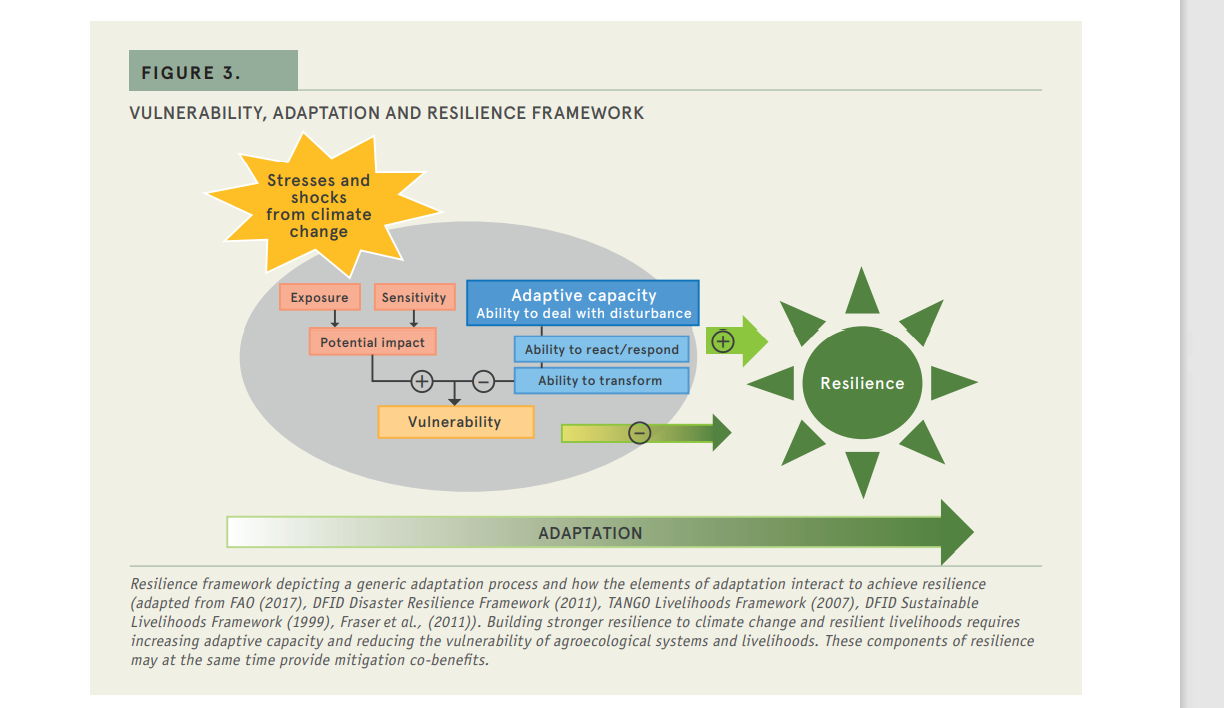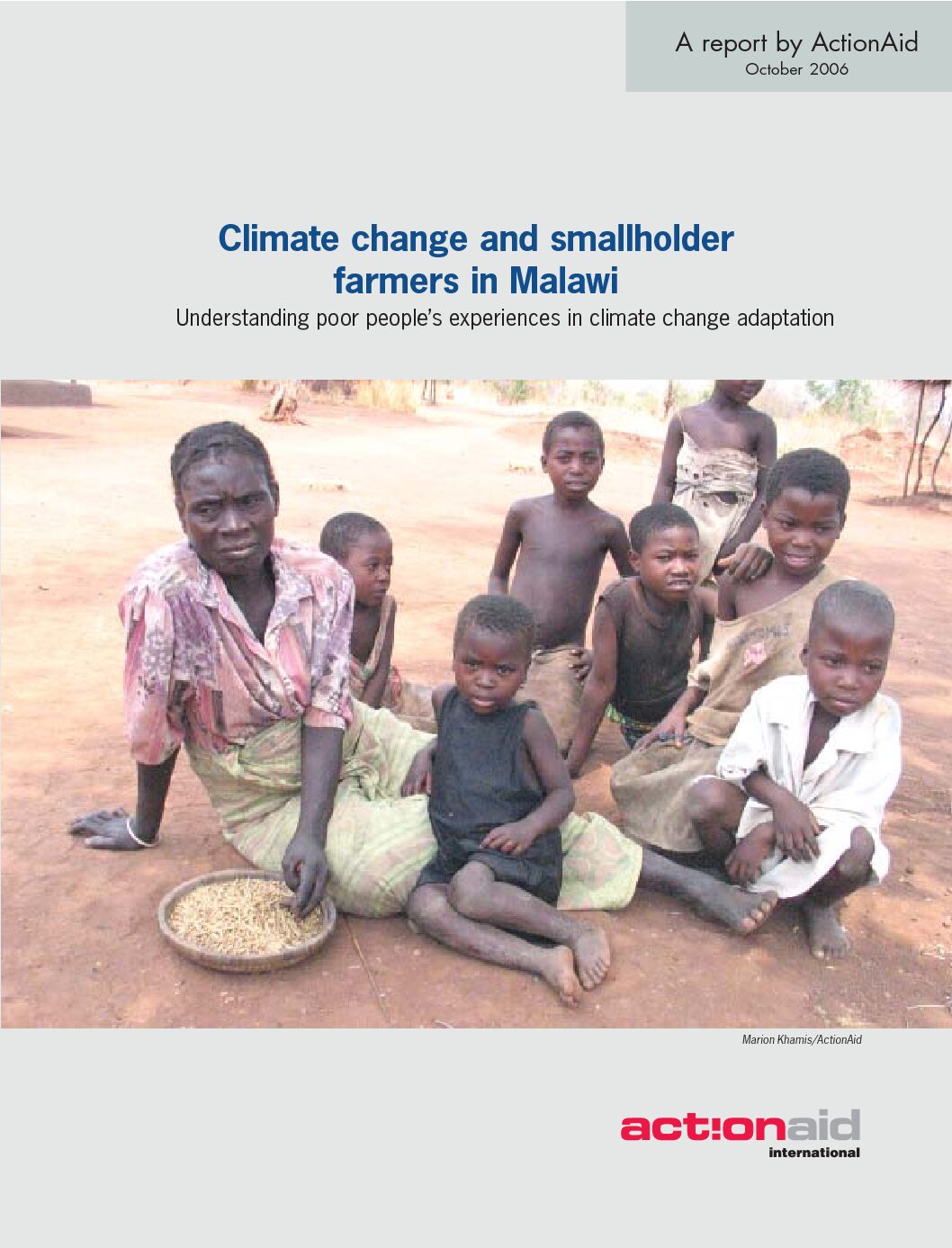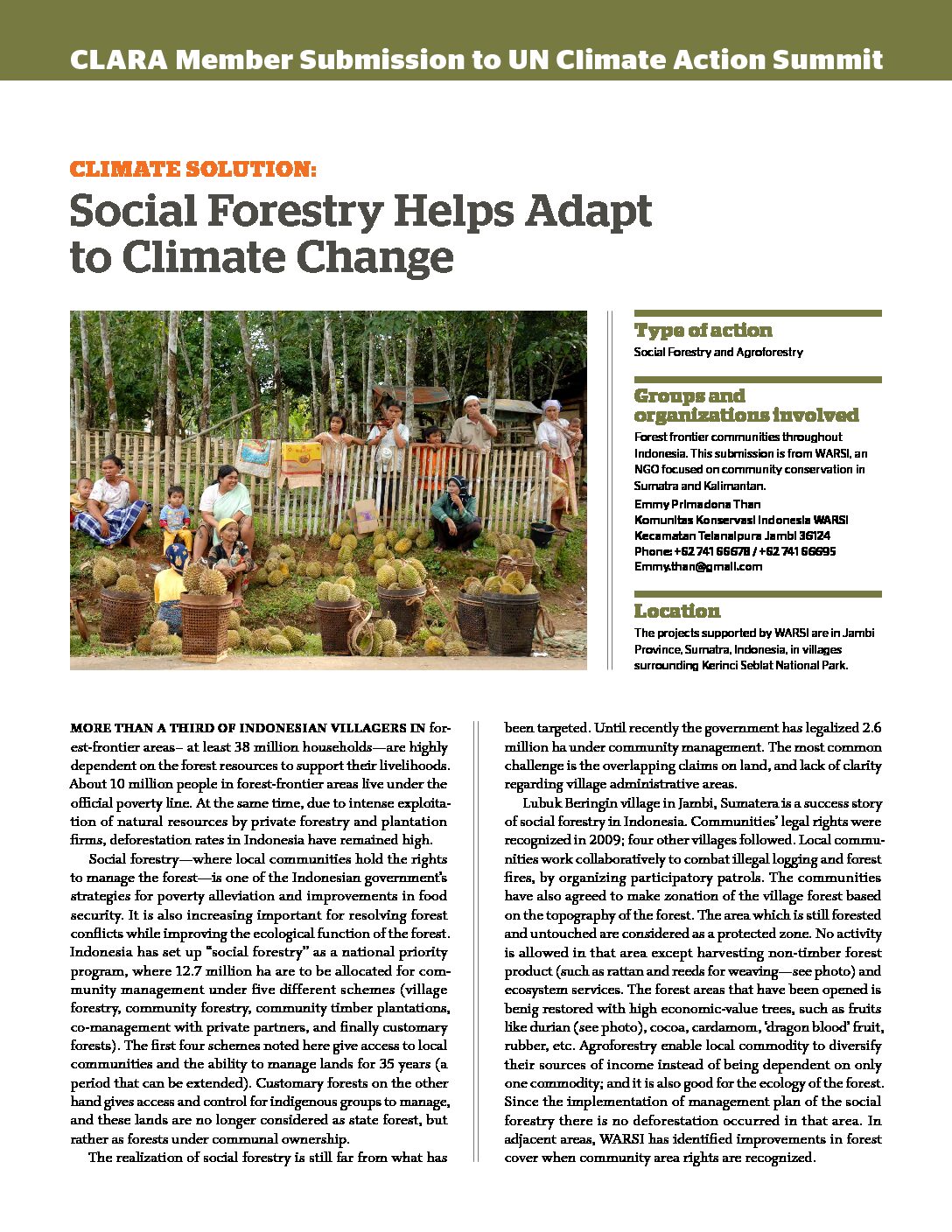Adaptation?
CLARA members strongly encourage focusing on local, regional, and national adaptation needs as part of climate action. It’s important that adaptation programs and projects are noted in the NDC. For countries at risk of desertification, or small island states subject to increased frequency of deadly storms, financing and implementing adaptation to climate change is the most urgent action to take. Adaptation should receive as much attention in the NDC as mitigation and ‘means of implementation’ (financing).
About Adaptation
Preparing and managing for climate change will definitely create new costs for national governments and communities. But adaptation spending is usually very cost effective. Planning now can greatly reduce the cost of responding to disasters after they happen.
Adaptation is important for food security. Farmers and pastoralists are vulnerable and need tools to respond to a changing climate. CLARA members look carefully at whether, and how, national food security is addressed in NDCs, and if there are farmer-directed programs that include adaptation support.
Adaptation is very ‘site-specific’. Indigenous and traditional knowledge may be very helpful in devising appropriate response measures. Ecosystem-based solutions are at the heart of many successful adaptation approaches.
Finally, ‘good governance’ is a key aspect of successful adaptation. Building resilient communities requires identifying vulnerable areas and populations; assessing the likelihood of impacts; a strong national policy framework for developing resilience; and good coordination with local governments.
There is a large literature on climate-change adaptation planning. We provide links to some of the key documents below. Click here to view a Glossary of terms related to adaptation.
Two key concepts related to adaptation are vulnerability and resilience. Social and ecological systems are vulnerable to shocks caused by climate variability, extreme weather events, as well as ‘slow-onset’ events like sea level rise. In contrast, resilience is the ability of a system to absorb stresses due to climate variability. The more adaptive an ecological or social system is, the more resilient it is.
Mangrove replanting in coastal zones helps to build resilience. Farmers who intercrop using agroecological approaches help to build system resilience while getting higher yields. Studies conducted after hurricanes have shown that farmers who had diversified production systems on their farms experienced less damage than their neighbors.
Biovision put together a graphic to illustrate the relationship between vulnerability, adaptation, and resilience:

Besides including adaptation in their NDCs, many countries have also developed National Adaptation Plans (NAPs). General information about National Adaptation Plans can be found on the UNFCCC website, while a list of already-developed national plans is indexed here. An example of national planning is detailed by UNDP in this briefing about Niger. In 2019, the Adaptation Committee of the UNFCCC issued a report on 25 years of climate change adaptation work in the Convention, and made recommendations to Parties (countries).
For now, CLARA introduces three different aspects of adaptation of particular importance for land use – ecosystem integrity, support to small farmers, and coastal management.
Ecosystem Integrity
Intact and restored ecosystems are critical sources of resilience. Integrating climate action with biodiversity protection and restoration increases the chance that ecosystems can adapt to climate change.
CLARA members strongly support strategies that address climate change and biodiversity conservation issues together. We identify this approach with the concept of ‘ecological integrity’, which is part of the emerging science on resilience, where biodiversity plays a functional role in stabilizing ecosystems and supporting livelihoods.
As the InterGovernmental Panel on Climate Change noted in its Special Report on Land, “Preserving natural resources such as peatland, coastal and forest restoration…provide almost exclusively positive impacts on sustainable development.” (B.62)
(Note: the term ‘ecosystem integrity’ is not the same as ‘environmental integrity’. Ecosystem integrity refers to the functional role that biodiversity plays in building resilience. ‘Environmental integrity’ is a term used in the UNFCCC to mean that mitigation actions are ‘counted’ once and only once.)
The economic costs of action on sustainable land management, mitigation, and adaptation are less than the consequences of inaction for humans and ecosystems.
IPCC Special Report on Land, Chapter 7
Support to Small Farmers
Small farmers and pastoralists are among the most vulnerable to climate change. Many existing agricultural practices will also need to change. NDCs should reflect that awareness. Improvements in outreach and extension, and targeted financing for farmer adaptation, should be included.
CLARA members have focused on agroecology, agroforestry, integrated systems agriculture, and the restoration of degraded pastures as contributing to climate-change adaptation. For example, ActionAid worked with small farmers in Malawi to build support for more climate-resilient, sustainable agriculture approaches.
In addition to changes in agricultural extension services, farmers in Malawi also called for decentralization of disaster risk response methods, and improved weather forecasting. Such supports might also be included in an NDC as part of adaptation strategies.
To build resilient and adaptive systems, farmers need access to knowledge and finance. Most of all for agroecology and adaptation, farmers need an enabling environment that supports them in developing context-specific solutions.
The UN Food and Agriculture Organization (FAO) and Biovision collaborated on a major study to answer the question: How can agroecology foster climate change adaptation, mitigation, and resilience through practices and policies? It includes case studies on the policy and technical potential of agroecology in Kenya and Senegal.
Coastal Management
A critical component of climate change is rising sea levels and increased incidence of extreme weather events including coastal storm surges. Maintaining coastal ecosystems – seagrass beds, mangrove and other coastal forest systems, healthy coral reefs – greatly reduces the severity of impacts of such weather events.
The European Union has adopted an Integrated Coastal Management (ICM) approach to reduce the risk from coastal flooding and storm surges. ICM measures can be included in the NDC as a contribution to adaptation and disaster risk reduction. A new global study indicates that mangrove protection quickly pays for itself by protecting populated areas against flooding.
What to Look For
- Make sure your NDC has a section on Adaptation. Too often, the importance of land management for adaptation is overlooked. Make sure concrete actions are proposed to increase resilience and protect livelihoods – for small farmers, fisherfolk, and other vulnerable populations.
- Adaptation measures is one of the main ways that countries can address climate change and biodiversity loss together. Does your NDC propose measures, such as increasing protection for critical ecosystems, that are good for biodiversity and for addressing climate change?
- In sections on adaptation, what role for ecosystem-based approaches (EBAs)? The Convention on Biological Diversity has developed guidance on the use of EBAs. The Intergovernmental Science-Policy Platform on Biodiversity and Ecosystem Services (IPBES) also emphasizes the importance of ecosystem-based approaches.
- Are the adaptation needs of small farmers mentioned in the NDC? Does the NDC propose new types of technical and financial support to help agriculturalists and pastoralists adapt to climate change?
- Agroecology has proven to be an approach that is able to serve adaptation needs while also generating mitigation co-benefits. Solid evidence demonstrates that agroecology increases resilience, especially by strengthening both ecological principles (in particular biodiversity and healthy soils) and social aspects, through the co-creation of knowledge that also builds on traditions and traditional knowledge.
- What about coastal management? Restoring coastal ecosystems can be the most cost-effective way to protect coastal population centers. Spending on protection and restoration now helps ensure against storm and flood damage.
Further Resources
See the background paper from the Global Commission on Adaptation.
Library Resources
About Adaptation
- National Adaptation Plans
- Background on NAPs
- UNFCCC Adaptation Report
- Ecosystem Based Adaptation
- Global Commission on Adaptation
- Agroecology and Adaptation

